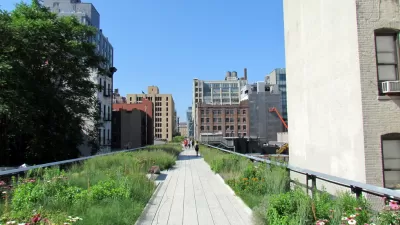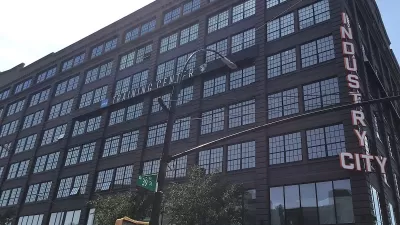The creator of "The Wire" talks to CityLab about "The Deuce," New York City in the 1970s, and how strategies for one town won't always work for another.

Until recently, most of David Simon’s literary and television projects have been based in America’s less-gentrified cities. "Homicide: Life on the Streets" and "The Wire" took place in Baltimore, "Treme" in New Orleans and "Show Me a Hero" in the rarely celebrated town of Yonkers.
His newest, "The Deuce," about the legalization and popularization of pornography, takes place largely in Midtown Manhattan in the early 1970s. It is resplendent with wardrobe and hairstyles true to the period, and it is a portrait of a Times Square that is virtually unrecognizable next to the current one.
Simon doesn't necessarily subscribe to the nostalgia for a seedier New York that is hard to avoid in the city, but neither does he see any lessons in urbanism. "New York’s future is not indicative of a resolution to America’s urban problems," Simon tells CityLab, "[it] has metrics that other cities can’t replicate economically or culturally."
More than new police tactics or social programs, the mayors that presided over the city during its most transformative year—he names Ed Koch and Rudy Guiliani—"were able to money the city again," Simon said, referencing Baltimore’s attempt to adopt "broken windows" policing.
Recognizing the cultural dilution that has come with a safer New York, Simon added, "Not that I’m rushing into Bubba Gump Shrimp in Times Square, but, hey, it’s tax base. I mean, I don’t mean to make fun. When stuff [like that] shows up in Baltimore, Maryland, I’m happy. I’ve watched my city lose 120,000 people. The idea that any business wants to come back in and start up—OK, welcome."
FULL STORY: CityLab

Study: Maui’s Plan to Convert Vacation Rentals to Long-Term Housing Could Cause Nearly $1 Billion Economic Loss
The plan would reduce visitor accommodation by 25,% resulting in 1,900 jobs lost.

North Texas Transit Leaders Tout Benefits of TOD for Growing Region
At a summit focused on transit-oriented development, policymakers discussed how North Texas’ expanded light rail system can serve as a tool for economic growth.

Using Old Oil and Gas Wells for Green Energy Storage
Penn State researchers have found that repurposing abandoned oil and gas wells for geothermal-assisted compressed-air energy storage can boost efficiency, reduce environmental risks, and support clean energy and job transitions.

Private Donations Propel Early Restoration of Palisades Playground
Los Angeles has secured over $1.3 million in private funding to restore the Pacific Palisades playground months ahead of schedule, creating a modern, accessible space that supports community healing after recent wildfires.

From Blight to Benefit: Early Results From California’s Equitable Cleanup Program
The Equitable Community Revitalization Grant (ECRG) program is reshaping brownfield redevelopment by prioritizing projects in low-income and environmental justice communities, emphasizing equity, transparency, and community benefits.

Planting Relief: Tackling Las Vegas Heat One Tree at a Time
Nevada Plants, a Las Vegas-based nonprofit, is combating the city’s extreme urban heat by giving away trees to residents in underserved neighborhoods, promoting shade, sustainability, and community health.
Urban Design for Planners 1: Software Tools
This six-course series explores essential urban design concepts using open source software and equips planners with the tools they need to participate fully in the urban design process.
Planning for Universal Design
Learn the tools for implementing Universal Design in planning regulations.
Ascent Environmental
Borough of Carlisle
Institute for Housing and Urban Development Studies (IHS)
City of Grandview
Harvard GSD Executive Education
Toledo-Lucas County Plan Commissions
Salt Lake City
NYU Wagner Graduate School of Public Service





























